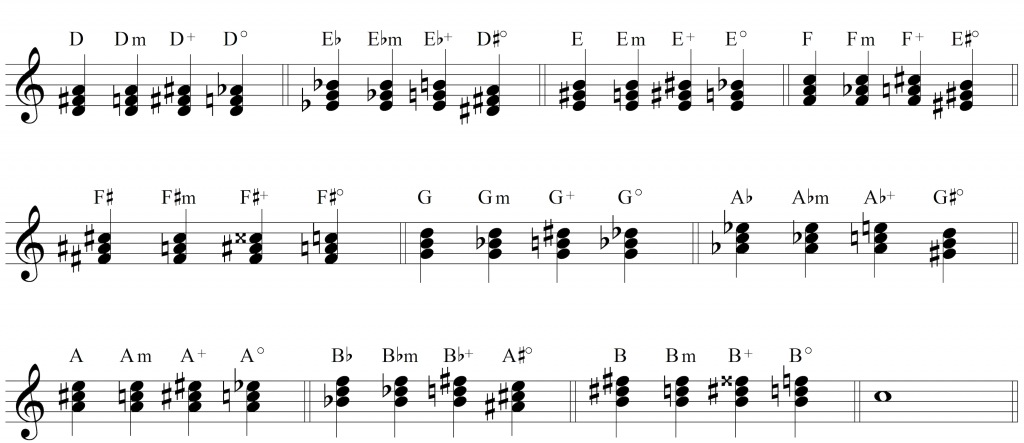Diatonic Sequential Broken Chord Drills
A. The four types of chords on a fixed pitch
-
Sing the broken chords while holding the bass note on the keyboard. The first two examples are realized below.
-
Sing the broken chord with absolute note names, then play the chord and name the triad: “C – E – G – E – C … C major, etc.”
B. Sequences
Methods for practicing after listening to the full chord progression: (a) sing the soprano line against the lower voices, (b) sing the bass line against the upper voices, (c) sing the broken chords. The goal is to be able to (d) sing the broken chords against the bass line, using solfège syllables, nonsense syllables, and absolute names in several other keys.
Example #1 below is presented in each of these methods.
1. Sequentially descending parallel first inversion chords in major
(a) sing the soprano line against the lower voices
(b) sing the bass line against the upper voices
(c) sing the broken chords
(d) sing the broken chords against the bass line
Follow this method with each subsequent example.
2. Sequentially descending parallel first inversion chords in minor
3. Sequential set of root position and first inversion triads
C. Dominant seventh chord and inversions on a fixed pitch
Compare the intervallic structure of the root position and three inversions of the dominant seventh chord over a stationary bass note. Sing using solfège syllables and absolute note names.
